Science
Reusing Recyclables: 10 Science Tools to Make for StudentsMay 22, 2024

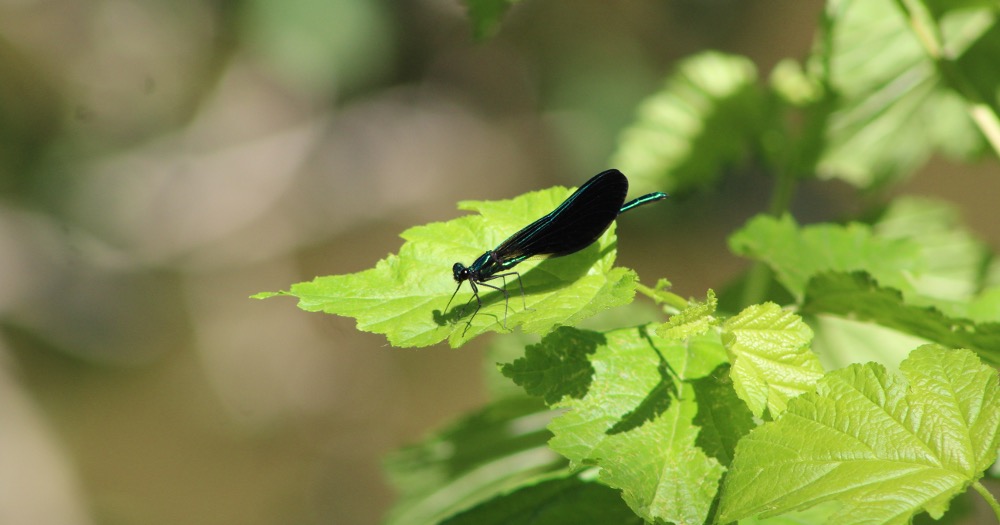
Teaching the weather of summer is a great way to end your school year and weather studies in kindergarten and 3rd grade. Your students are already feeling the warmer temperatures, hearing the birds call, and getting antsy, so why not harness the excitement and get outside?!
Summer is unique in each region and will have its own set of weather patterns to be studied. By studying your local summer weather, your students are getting to use real-world application of knowledge and it will also get them prepared for what’s to come when they are on break.
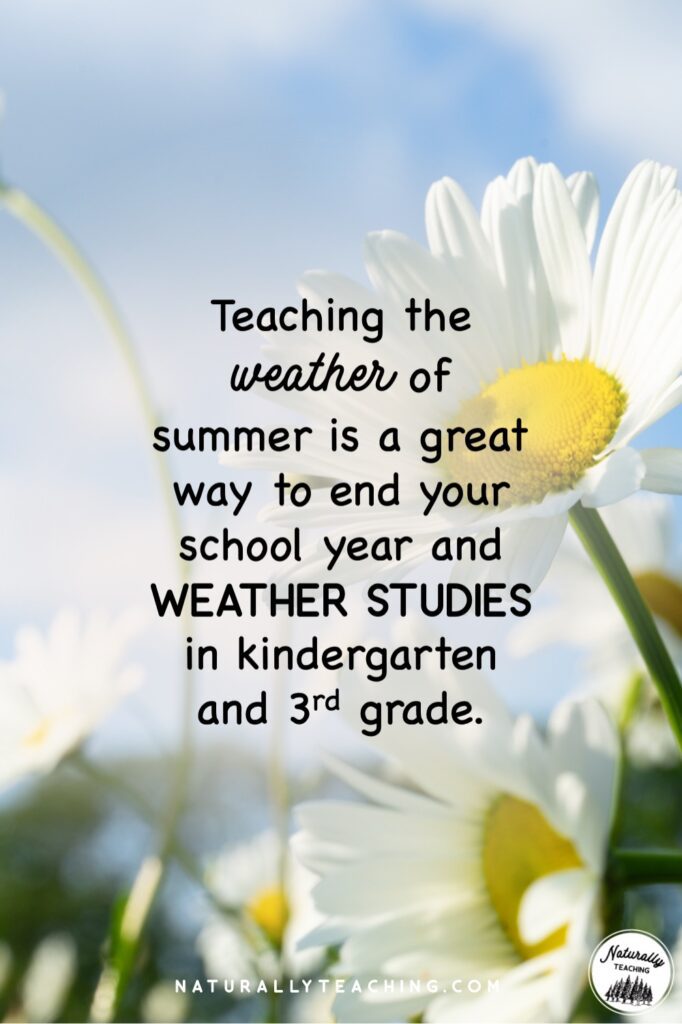
You’ll find in this article suggestions on how to introduce the summer season to your students, information about the weather of summer and what it could look like, and how the spring to summer transition affects plants and animals.
Don’t need all the info? Use this list to jump to the stuff you need:
What does a bird in summer do?
What do reptiles and amphibians do in summer?
When you are introducing the summer season to your students, it’s best to start out with how the seasons are made. (If you’re not sure how the seasons are made, check out this article, “A Helpful Introduction for Teachers Teaching the Four Seasons in School.”)
When you start with an explanation of how summer is made, you provide your students background information to draw upon for your summer introduction. You can introduce the summer season by creating a simulation using the sun outside your school.
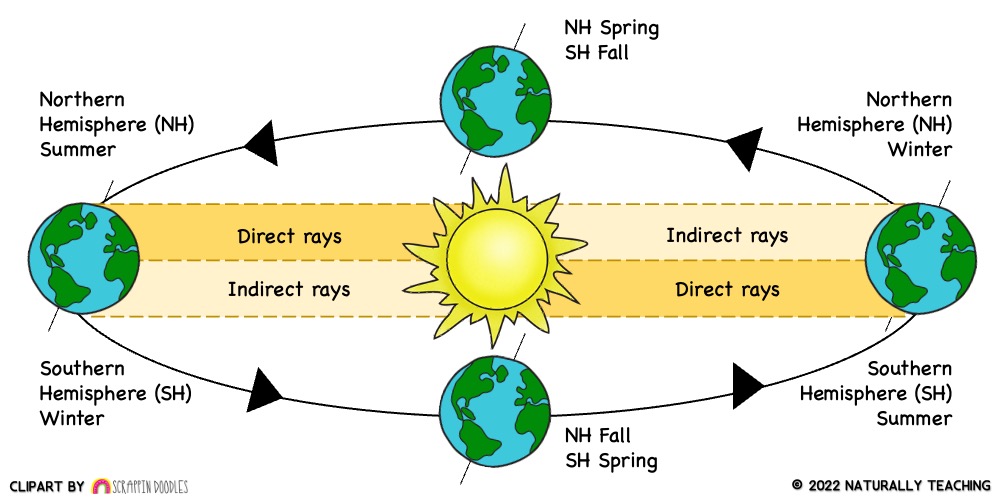
Now that the days are growing longer, teaching about summer can be made easier using the actual sun itself. Take your students outside on a sunny day. Have them turn their bodies so that the sun is shining on half of their faces while the other half is in shadow. Instruct them to stay that way for at least a minute or two until they can feel a difference in temperature on the two halves of their faces. While they wait, consider telling summer or sun jokes or riddles.
This simulation is similar to how the Earth is interacting with the sun during summer, after the summer solstice. Both the Northern and Southern Hemispheres of the Earth are physically the same distance from the sun, just like their faces are while you’re outside. However, the half of the Earth that is tilted slightly more toward the sun is getting more direct rays and is experiencing warmer weather patterns, aka summer. This is like the side of their face covered in sun; it’s getting more direct sunlight and warmer temperatures at the same distance as the shadowed half of their face.
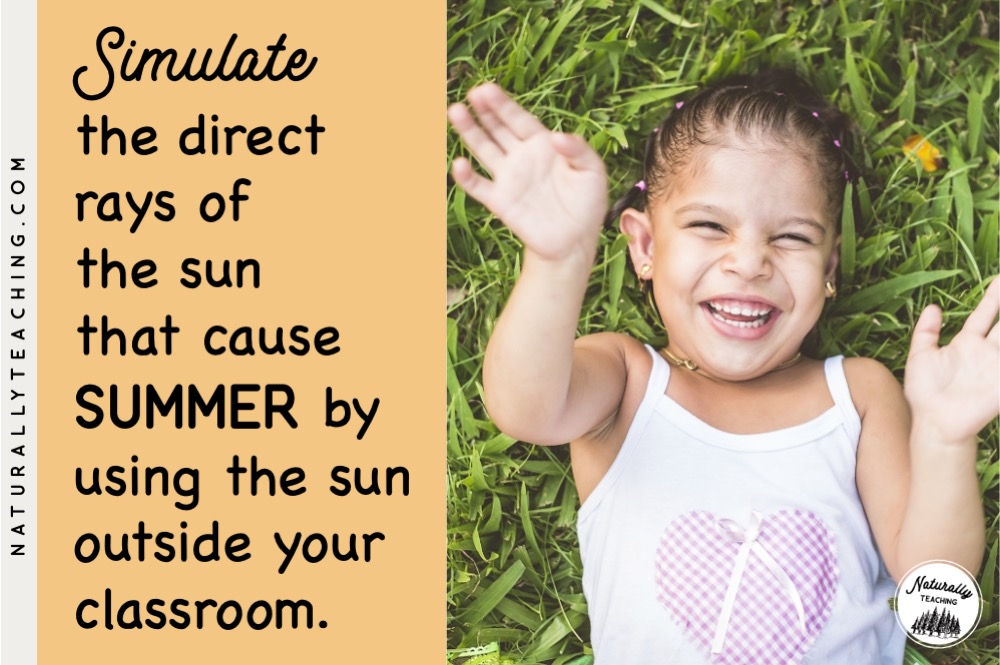
On the flip side, the part of the Earth that is slightly tilted away from the sun is getting fewer direct rays and is experiencing cooler weather patterns, aka winter. This is like the side of their face covered in shadow; it’s getting fewer direct rays and cooler temperatures at the same distance as the sun-covered half of their face.
Is this a perfect representation? No. It is limited and doesn’t translate exactly to what is happening in space. BUT, it is a very powerful simulation that will enhance the senses and help your students make physical connections to this abstract concept.
Teaching the weather of summer is helpful to observe and identify weather patterns throughout the year in kindergarten and 3rd grade classrooms (NGSS K-ESS2-1 and 3-ESS2-1). If you’ve taught weather patterns in the fall, winter, and spring, ending the year with a brief introduction to summer weather will help round out your students’ overall understanding of local weather patterns.
Because there are direct sun rays on the part of the Earth experiencing summer, the temperatures are the warmest of the year. Depending on the region, summer brings sunny days! There are occasionally cloudy days and days with rain, but as a whole, many regions experience hot and sunny days in the summer.
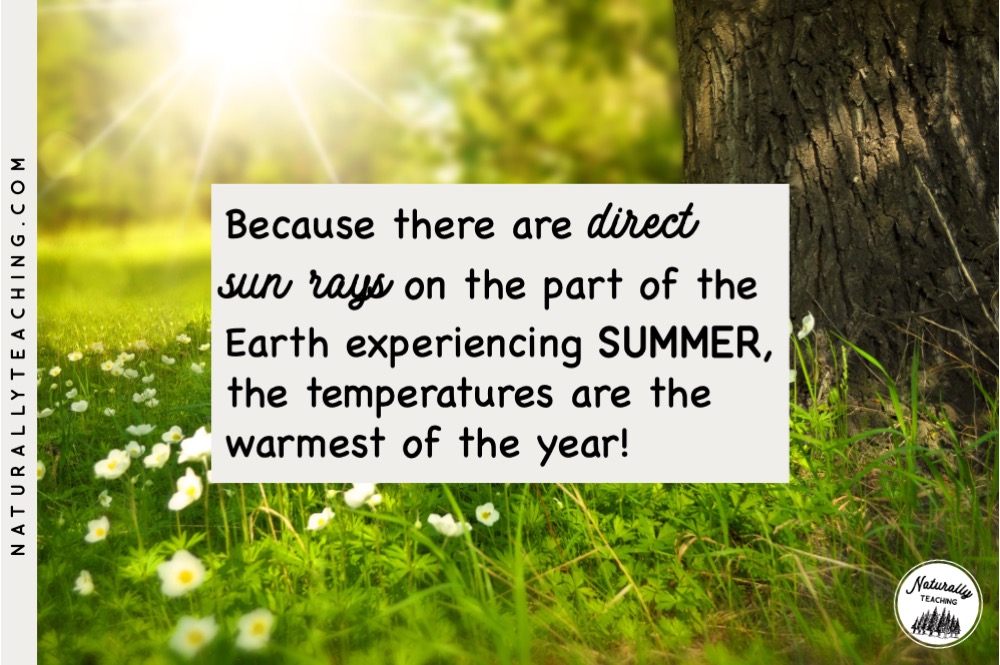
The season transition from spring to summer is very easy on your students. They are more than happy to ditch their jackets and pants in favor of short sleeves and shorts. Although many of you won’t be seeing your students during the summer, it’s still a good idea to prepare them for outdoor gear that will keep them safe over the summer.
If you study the weather daily leading up to the end of the school year, you can introduce the warmer temperatures and the UV rays that come with the weather of summer. Your students will notice an upward trend in temperatures both when you are collecting data and while they are outside at recess. This real-world data can help your students develop life skills that will keep them safer during the summer when you’re not around to remind them of appropriate outdoor gear.
You could conduct an experiment at the end of the school year to help your students understand that light colored clothes will help keep them cooler during the summer than darker clothes. Short sleeves and shorts are also beneficial because they don’t hold body heat close, overheating them in the hot temps. Other things that could be helpful for whenever they go outside in the summer include a hat, a water bottle, and sunscreen.
Teaching about the weather of summer can help your students understand why plants in summer are so green and full! Triggered by the longer hours of daylight from the spring, plants have sprouted and are working hard to make food to power their annual tasks.
For plants to be able to make their own food, they need sunlight, carbon dioxide, and water. From these three ingredients and the help of chlorophyll, plants make their own energy that can power the creation of flowers and then hopefully seeds. All organisms have the biological task of creating offspring to perpetuate the species and the weather of summer gives plants the ingredients they need to make lots of energy to produce flowers and seeds.
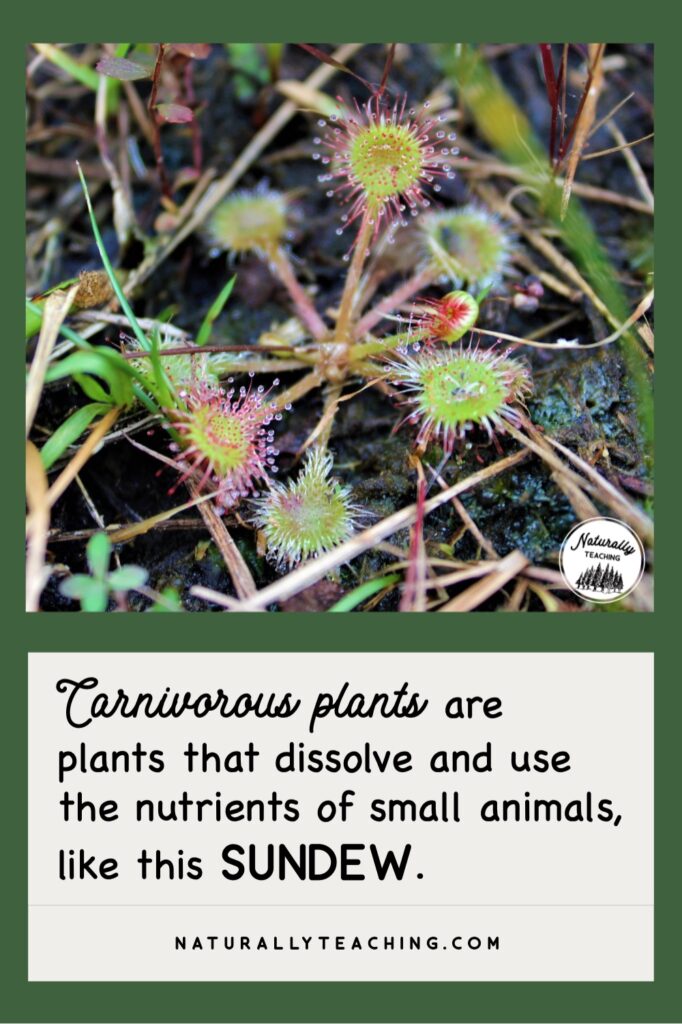
A lot of people think about spring as the time for flowers, but a lot of plants actually flower in the summer when there is bountiful sun for food creation. With the higher temperatures of summer, there are also more insects around than in the spring and fall which gives the plants a better chance of being pollinated.
Because there are more insects out and about in the summer heat, the carnivorous plants take advantage of the weather of summer to get the nutrients they need from invertebrates. Carnivorous plants are plants that dissolve and use the nutrients of small animals. Some of these plants dissolve invertebrates in their flowers while others do so on specialized leaves. In Michigan, we have three carnivorous plants that can be found in summer including Bladderwort, Sundew, and Pitcher plants. Carnivorous plants are a hot topic for kids; if it fits into your curriculum make sure to bring these bad boys up!
Teaching the weather of summer can help your students understand what is happening to the animals around them. Animals, like plants, are taking advantage of the warm temperatures and abundance to have young and help them survive to adulthood.
A bird in summer is very busy indeed! Spring is spent making nests and laying eggs, but many birds spend the summer continuing to lay eggs and take care of babies. Large birds like eagles and owls are teaching their one set of babies how to be adults during the summer while smaller birds tend to have more than one set of babies each year. As an example, the humble Mourning dove can have up to six clutches, or sets, of babies each year! Summer is a great time for birds to have babies because there are so many insect larvae around that can be used for protein to fuel the growth of their young.
Thanks to the warm weather of summer, insects are busy! Insects are cold-blooded, meaning they get their heat from the environment. Summer is a time of warm temperatures, providing the insects what they need to move around. Insects in summer spend their time perpetuating their species. Some insects spent the spring in their larval stage and will spend the summer eating and turning into pupae. Other insects spent the spring as eggs and will hatch into larvae that will eat ferociously to pupate. Some insects spent the spring as adults and will use the summer to find a mate to lay eggs. Others spent the spring as pupae and will emerge as adults to find a mate. Whatever stage the insect begins summer in, their main drive is to make it to adulthood and help their species continue.
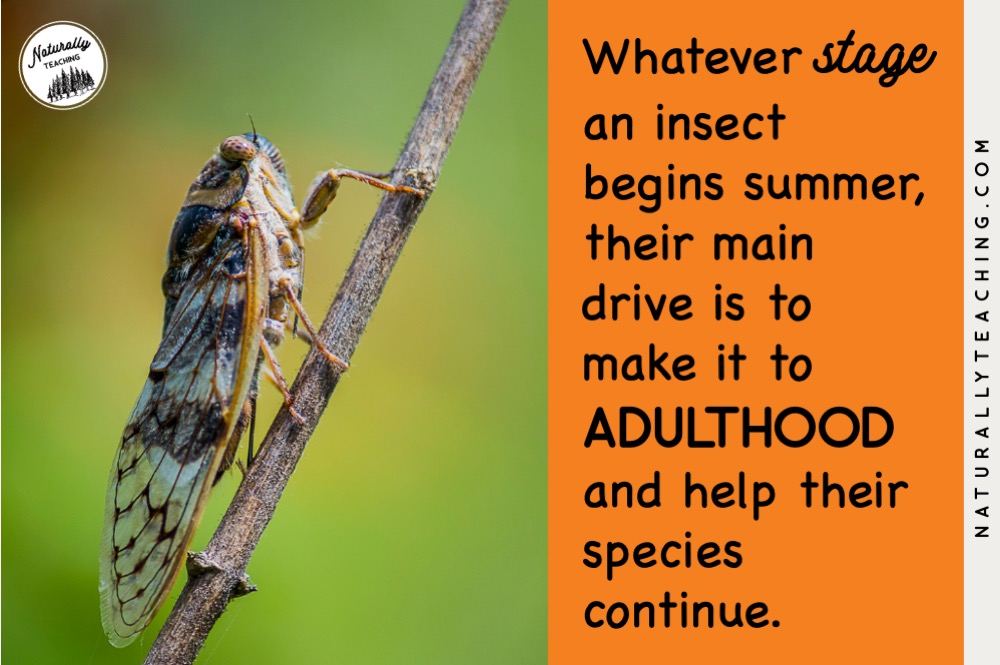
Reptiles and amphibians are also cold-blooded animals that rely on their surroundings for heat; this makes summer time their opportunity to get things done. Like most of the other animals in this article, their focus is to make babies to keep their species going. Summer is the season of mating and egg laying for most reptiles and for many species of amphibians. Reptiles, including snakes, lizards, and turtles, lay their eggs on land in sand or other soil. Most amphibians, including salamanders, toads, and frogs, lay their eggs in water so that their offspring can morph from their larval stages into adults. These animals also take advantage of the summer heat to eat food to provide them the energy to grow and survive through the seasons.
Fish are the oddballs on this list in the sense that they are typically done with their mating and egg laying by the end of spring. Since their business is already completed, fish move to water that is a comfortable temperature for everyday life. Fish are also cold-blooded and get their heat from their surroundings. Since water heats up overtime, the fish move from the outer banks where it’s shallow and heats quickly to deeper water where they can find their optimal temperatures. Fish in summer spend their time eating and growing.
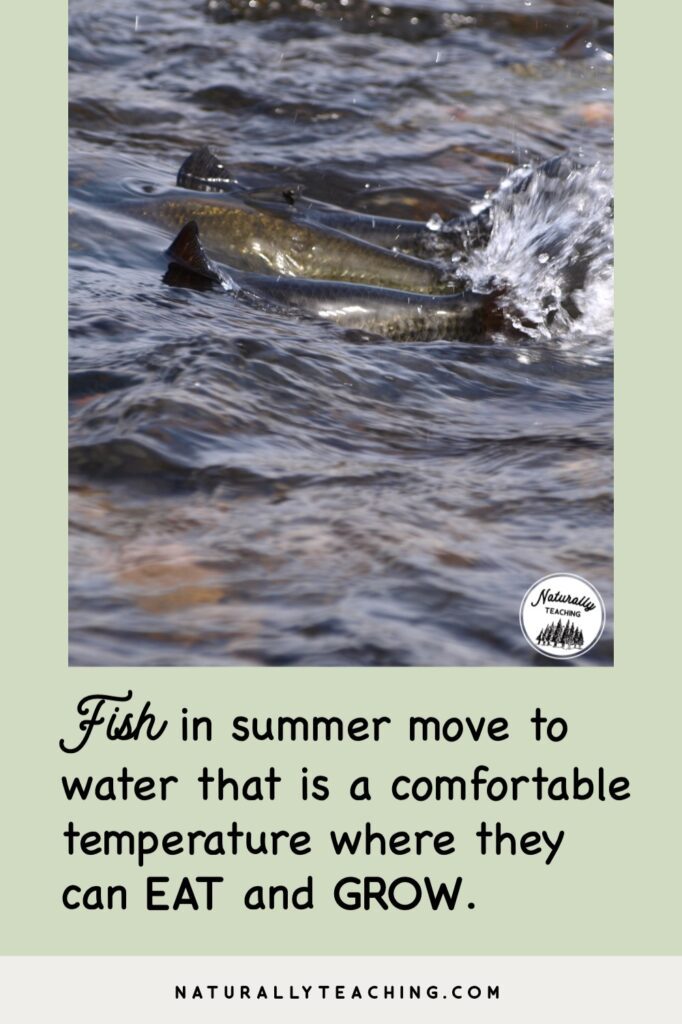
Mammals fit in with most of the other animals on this list as they are busy taking care of their babies during the summer. Some of the larger animals like bear, otter, and bobcats only have one set of babies each year and they spend the summer teaching their young how to survive. Other smaller mammals like mice, voles, and squirrels tend to have more than one set of babies each year. Small mammals in summer spend their time mating, giving birth, providing milk to their young, teaching them how to be adults and then repeating the process. Summer is an optimal time for mammals to have young because there is so much food available for both the nursing mother and the young once they can scavenge or hunt on their own.
Teaching about the weather of summer can be a fun way to end your school year while also rounding out your students’ understanding of weather patterns throughout the seasons. By teaching the weather of summer, your students get to study the weather patterns of the season, practice their scientific skills, and see how nature is interconnected with real-life applications of new knowledge during place-based learning opportunities. Enjoy this season with its hot temperatures, abundant plant and animal life, and *hopefully* a break for you!
Looking for activities to help you teach the weather of summer? Check out my summer seasonal resources with activities like a spring to summer sorting worksheet, a seasonal booklet, and a summer outdoor scavenger hunt! These are also great options to send home with kiddos at the end of the school year to be completed with adults at home.
Bibliography
Missouri Department of Conservation. (n.d.) Fish Habits and Habitat. Retrieved from https://mdc.mo.gov/fishing/get-started-fishing/fish-habits-habitat
Do you have an amazing way that you spend time teaching the weather of summer? Include your favorite activities in the comments!
Looking for other articles about the seasons to help you teach weather all school year long? Check these out!
“A Helpful Introduction for Teachers Teaching the Four Seasons in School”
“A Helpful Guide to Teaching About Fall in Elementary School”
“A Helpful Guide to Teaching the Season Transition to Winter”
“A Helpful Guide to Answering the Question ‘What is the Spring Season?”
0